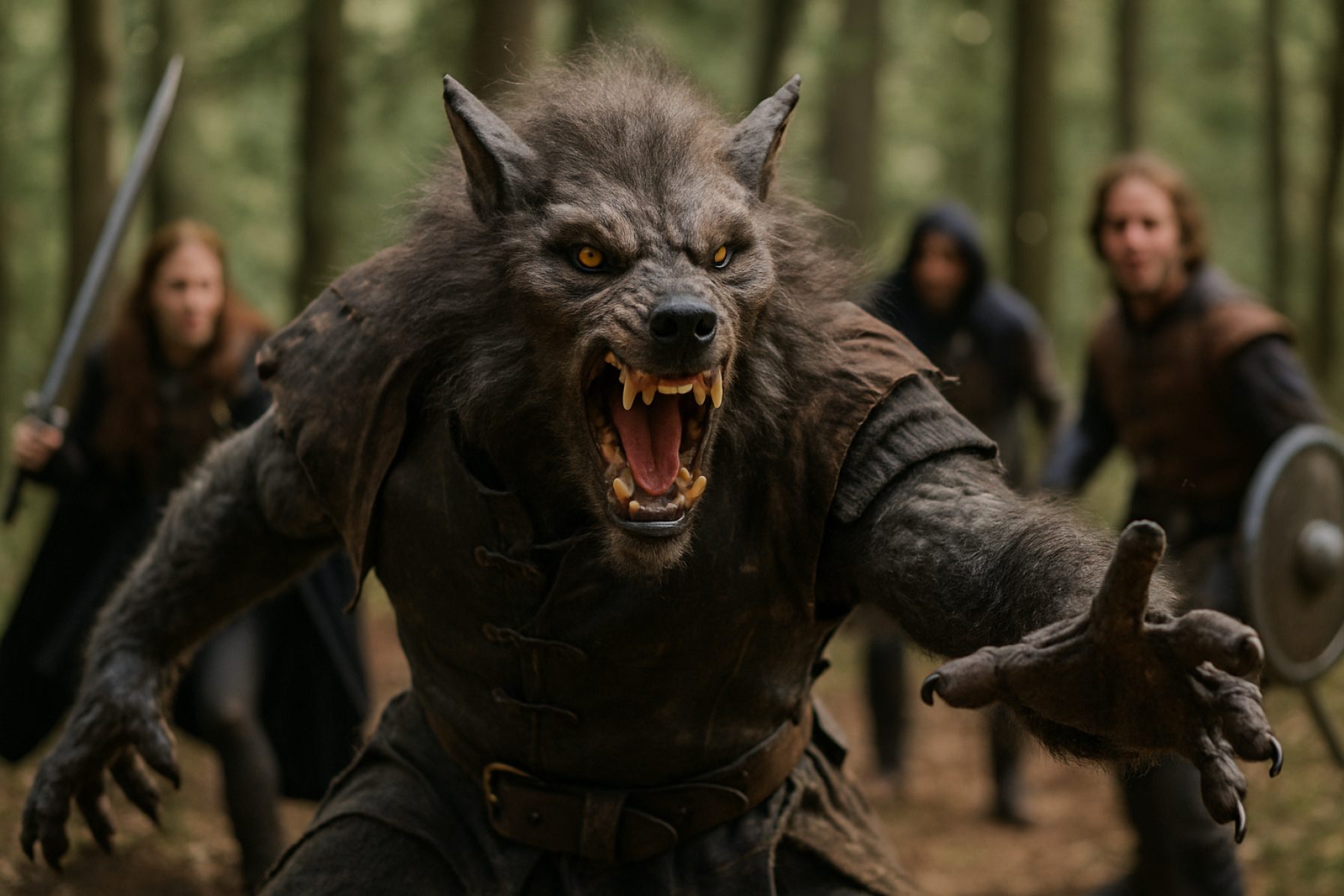Step Into the Shadows: Discover the Immersive Experience of Werewolf LARPing. Explore How Players Transform Into Legends Under the Moonlight.
- Origins and Evolution of Werewolf LARPing
- Core Rules and Gameplay Mechanics
- Character Creation: Building Your Inner Beast
- Immersive Storytelling and Narrative Techniques
- Costumes, Props, and Setting the Scene
- Community, Events, and Social Dynamics
- Safety, Consent, and Player Wellbeing
- Tips for Newcomers: How to Join a Werewolf LARP
- The Future of Werewolf LARPing: Trends and Innovations
- Sources & References
Origins and Evolution of Werewolf LARPing
Werewolf LARPing, a subgenre of live-action role-playing (LARP), traces its roots to the broader tradition of immersive storytelling games that emerged in the late 20th century. The genre’s most significant catalyst was the release of “Werewolf: The Apocalypse” in 1992 by White Wolf Publishing, which introduced players to a dark, mythic world where they could embody Garou—werewolf shapeshifters fighting to protect the planet. This tabletop role-playing game quickly inspired live-action adaptations, as fans sought to physically enact the intense social dynamics, spiritual themes, and visceral conflicts central to the setting.
The first organized Werewolf LARP events appeared in the mid-1990s, often as offshoots of the more established “Vampire: The Masquerade” LARP scene. Groups like the Mind’s Eye Society (formerly the Camarilla) played a pivotal role in formalizing rulesets and fostering a community infrastructure for these games. Over time, the genre evolved to include a variety of play styles, from intimate, narrative-driven gatherings to large-scale, competitive events. Thematically, Werewolf LARPing has expanded beyond its original environmentalist and spiritual motifs to explore issues of identity, community, and the struggle between civilization and nature.
Today, Werewolf LARPing continues to adapt, incorporating digital tools for organization and storytelling, and drawing inspiration from new media and folklore. Its evolution reflects broader trends in LARP culture, emphasizing collaborative storytelling, inclusivity, and the blending of myth with personal narrative. The enduring appeal of Werewolf LARPing lies in its ability to offer participants a transformative, communal experience rooted in both ancient legend and modern creativity.
Core Rules and Gameplay Mechanics
Werewolf LARPing (Live Action Role-Playing) is governed by a set of core rules and gameplay mechanics designed to facilitate immersive storytelling, fair play, and dynamic character interaction. Most Werewolf LARP systems are inspired by tabletop role-playing games such as World of Darkness, particularly the “Werewolf: The Apocalypse” setting. Players assume the roles of Garou (werewolves) or other supernatural beings, each with unique abilities, motivations, and allegiances.
Character creation typically involves selecting a tribe, auspice (moon phase), and breed, which together define a character’s strengths, weaknesses, and supernatural gifts (known as “Gifts”). Players use a combination of costuming, physical acting, and in-game props to represent their characters and abilities. Conflict resolution—whether social, mental, or physical—is usually handled through a combination of live-action challenges (such as rock-paper-scissors or card draws) and pre-determined character statistics, ensuring outcomes are both fair and unpredictable.
Gameplay is structured around scenes and story arcs orchestrated by storytellers or game masters, who introduce plot elements, non-player characters, and challenges. The rules also cover safety protocols, consent, and out-of-character communication, which are essential for maintaining a respectful and inclusive environment. Many LARPs employ a “bleed” policy to help players separate in-game emotions from real-life feelings, and use safety signals or hand gestures to indicate comfort levels during intense scenes (Larping.org).
Ultimately, the core rules and mechanics of Werewolf LARPing are designed to balance narrative freedom with structured play, allowing participants to collaboratively create dramatic, supernatural stories while ensuring everyone’s enjoyment and safety.
Character Creation: Building Your Inner Beast
Character creation in Werewolf LARPing is a nuanced process that blends personal imagination with established game mechanics and lore. Players are encouraged to craft personas that reflect both the human and lupine aspects of their characters, often drawing inspiration from myth, pop culture, and the specific ruleset of the LARP system in use. For example, in the popular World of Darkness setting, participants select a tribe, auspice (moon phase), and breed, each of which shapes their werewolf’s abilities, social role, and worldview.
A key aspect of building your “inner beast” is developing a compelling backstory that explains how your character balances their dual nature. This often involves exploring themes of rage, loyalty, and the struggle to maintain humanity while embracing primal instincts. Many LARPs provide detailed character sheets and questionnaires to help players flesh out motivations, relationships, and personal goals. Some games also encourage collaborative storytelling, allowing players to connect their characters’ histories for richer in-game dynamics.
Physicality and costuming are also integral to character creation. Players may use makeup, prosthetics, or specific clothing to visually represent their werewolf form, enhancing immersion for themselves and others. Additionally, some LARPs incorporate ritualistic or symbolic items—such as totems or talismans—that reflect a character’s spiritual ties or supernatural powers. Ultimately, the process is designed to foster deep emotional investment and facilitate transformative roleplay experiences, as highlighted by resources from Mind’s Eye Society and other major LARP organizations.
Immersive Storytelling and Narrative Techniques
Immersive storytelling is at the heart of Werewolf LARPing, transforming simple role-play into a deeply engaging narrative experience. Unlike tabletop games, where the story unfolds through dialogue and dice, Werewolf LARPing relies on physical presence, costuming, and in-character improvisation to create a living, breathing world. Players embody supernatural beings—often inspired by the World of Darkness universe—navigating complex social hierarchies, ancient rivalries, and personal struggles. Organizers, known as storytellers, craft overarching plots but leave space for player agency, allowing the narrative to evolve organically based on character choices and alliances.
Techniques such as environmental storytelling—using props, lighting, and soundscapes—help set the mood and reinforce the supernatural atmosphere. In-game rituals, secret meetings, and dramatic confrontations are staged in real time, heightening emotional investment and suspense. Many LARPs employ “bleed,” a phenomenon where players’ emotions and experiences overlap with those of their characters, to foster deeper immersion and empathy. Storytellers may use meta-techniques like “cut scenes” or “time jumps” to advance the plot or explore flashbacks, ensuring the pacing remains dynamic and engaging.
Ultimately, the collaborative nature of Werewolf LARPing means that every participant contributes to the unfolding story, making each event unique. This shared authorship not only strengthens community bonds but also allows for nuanced exploration of themes like identity, loyalty, and the struggle between humanity and monstrosity, as highlighted by organizations such as Mind’s Eye Society.
Costumes, Props, and Setting the Scene
Costumes, props, and immersive settings are essential elements that elevate the experience of Werewolf LARPing, transforming simple roleplay into a vivid, shared narrative. Participants often invest significant effort into their costumes, blending period-appropriate clothing with supernatural flair. For werewolf characters, this might include faux fur accents, clawed gloves, prosthetic fangs, and detailed makeup or masks to evoke the transformation from human to beast. Some LARPers even use animatronic tails or custom contact lenses to enhance their appearance and express their character’s unique traits.
Props play a crucial role in reinforcing the world’s authenticity. Weapons are typically crafted from foam or latex for safety, but are painted and detailed to resemble ancient swords, axes, or mystical artifacts. Personal items such as talismans, journals, or ritual objects help players embody their characters and drive the story forward. The use of sound effects—like howls or ambient forest noises—and lighting, such as flickering lanterns or colored LEDs, further immerses participants in the supernatural atmosphere.
Setting the scene is equally important. Organizers often choose wooded areas, abandoned buildings, or specially designed indoor spaces to evoke the eerie, liminal spaces where werewolves might gather. Set dressing might include faux stone altars, runic symbols, and fog machines to create a sense of mystery and danger. These environmental details not only enhance the visual experience but also support the narrative, making the world of Werewolf LARPing feel tangible and alive. For more on LARP costuming and set design, see resources from the LARPing.org and the LARP Space.
Community, Events, and Social Dynamics
Werewolf LARPing (Live Action Role-Playing) thrives on its vibrant community and the immersive events that bring players together. Unlike solitary tabletop experiences, Werewolf LARPing is inherently social, relying on group dynamics, negotiation, and collective storytelling. Communities often form around local gaming clubs, university societies, or dedicated LARP organizations, fostering a sense of belonging and shared identity among participants. These groups organize regular events, ranging from small, intimate gatherings to large-scale conventions that attract enthusiasts from across regions or even internationally.
Events are typically structured around intricate narratives inspired by werewolf mythology, often drawing from established role-playing systems such as World of Darkness. Players assume the roles of werewolves, humans, or other supernatural beings, navigating alliances, rivalries, and moral dilemmas. The social dynamics at play are complex: trust and deception are central themes, and players must balance personal goals with the interests of their pack or faction. This creates a dynamic environment where social skills, empathy, and improvisation are as important as strategic thinking.
The community aspect extends beyond gameplay. Many groups maintain active online forums, social media pages, and Discord servers, where members discuss lore, share costume ideas, and plan future events. These platforms help sustain engagement between live events and foster inclusivity, allowing newcomers to integrate smoothly. The collaborative nature of Werewolf LARPing encourages mentorship, with experienced players guiding novices, thus ensuring the continuity and growth of the community. Overall, the social fabric of Werewolf LARPing is as rich and layered as the stories it tells, making it a unique and enduring subculture within the broader LARPing world.
Safety, Consent, and Player Wellbeing
Safety, consent, and player wellbeing are foundational principles in Werewolf LARPing, given the genre’s intense emotional themes and physical interactions. Organizers typically implement robust safety protocols, such as pre-game briefings, to outline boundaries and establish clear rules for physical contact, emotional triggers, and in-character conflict. Many games use standardized safety tools like the “X-Card” or “cut/brake” signals, allowing participants to pause or stop scenes if they feel uncomfortable or overwhelmed. These tools empower players to maintain agency over their experiences and ensure that everyone’s boundaries are respected.
Consent is an ongoing process in Werewolf LARPing, not a one-time agreement. Players are encouraged to communicate openly about their comfort levels, both before and during the game. Organizers often provide workshops or written guidelines on consent, emphasizing the importance of checking in with scene partners and respecting “no” as a complete answer. This is especially crucial in Werewolf LARP, where themes of violence, transformation, and predatory behavior can evoke strong emotional responses.
Player wellbeing extends beyond the game itself. Many LARP communities offer debriefing sessions after intense scenes or events, providing a space for participants to process their experiences and support one another. Some organizations also designate safety officers or “emotional first aiders” who are available throughout the event to address concerns or mediate conflicts. These practices, recommended by groups such as the LARP Safety Advisory Board, help foster a culture of care, ensuring that Werewolf LARPing remains an inclusive and positive experience for all involved.
Tips for Newcomers: How to Join a Werewolf LARP
Joining a Werewolf LARP (Live Action Role-Playing) community can be an exciting and immersive experience, but for newcomers, the process may seem daunting. Here are some practical tips to help you get started:
- Research Local Groups: Begin by searching for local or regional LARP organizations that host Werewolf-themed games. Many groups have official websites or social media pages where they post event schedules and newcomer information. For example, the Mind’s Eye Society is a prominent organization that runs World of Darkness LARPs, including Werewolf: The Apocalypse.
- Read the Rules and Setting: Familiarize yourself with the game’s rulebook and setting. Most groups use published materials, such as those from World of Darkness, which provide background lore, character creation guidelines, and gameplay mechanics.
- Contact Organizers: Reach out to game organizers or storytellers. They can answer questions, help you create a character, and explain what to expect at your first event. Many groups offer “new player” sessions or mentorship programs.
- Prepare Your Character: Start with a simple character concept. Focus on learning the basics of role-play and the social dynamics of the game before delving into complex mechanics or backstories.
- Attend an Event: Arrive early, introduce yourself, and observe how experienced players interact. Don’t hesitate to ask for guidance—most communities are welcoming and eager to help newcomers integrate.
By taking these steps, you’ll be well on your way to enjoying the unique camaraderie and storytelling that Werewolf LARPing offers.
The Future of Werewolf LARPing: Trends and Innovations
The future of Werewolf LARPing is shaped by a blend of technological innovation, evolving community values, and a growing appetite for immersive storytelling. One of the most significant trends is the integration of digital tools—such as mobile apps for character management, real-time voting, and narrative tracking—which streamline gameplay and enhance the overall experience. These technologies allow for more complex storylines and dynamic interactions, making games more accessible to newcomers and veterans alike. For example, platforms like Paradox Interactive have begun to explore digital supplements for live-action role-playing, hinting at a future where hybrid digital-physical experiences become the norm.
Another innovation is the increasing emphasis on inclusivity and safety within the LARPing community. Organizers are adopting comprehensive consent and safety policies, inspired by best practices from groups such as Nordic Larp, to ensure that all participants feel welcome and protected. This shift is fostering more diverse narratives and encouraging participation from a broader demographic.
Environmental storytelling is also on the rise, with game designers leveraging unique venues, atmospheric props, and even augmented reality to create deeply immersive worlds. The use of AR technology, as seen in projects supported by MAGFest, allows for supernatural elements—like werewolf transformations or mystical clues—to be visualized in real time, blurring the line between fiction and reality.
As these trends converge, Werewolf LARPing is poised to become more interactive, inclusive, and technologically sophisticated, ensuring its continued growth and relevance in the years ahead.











